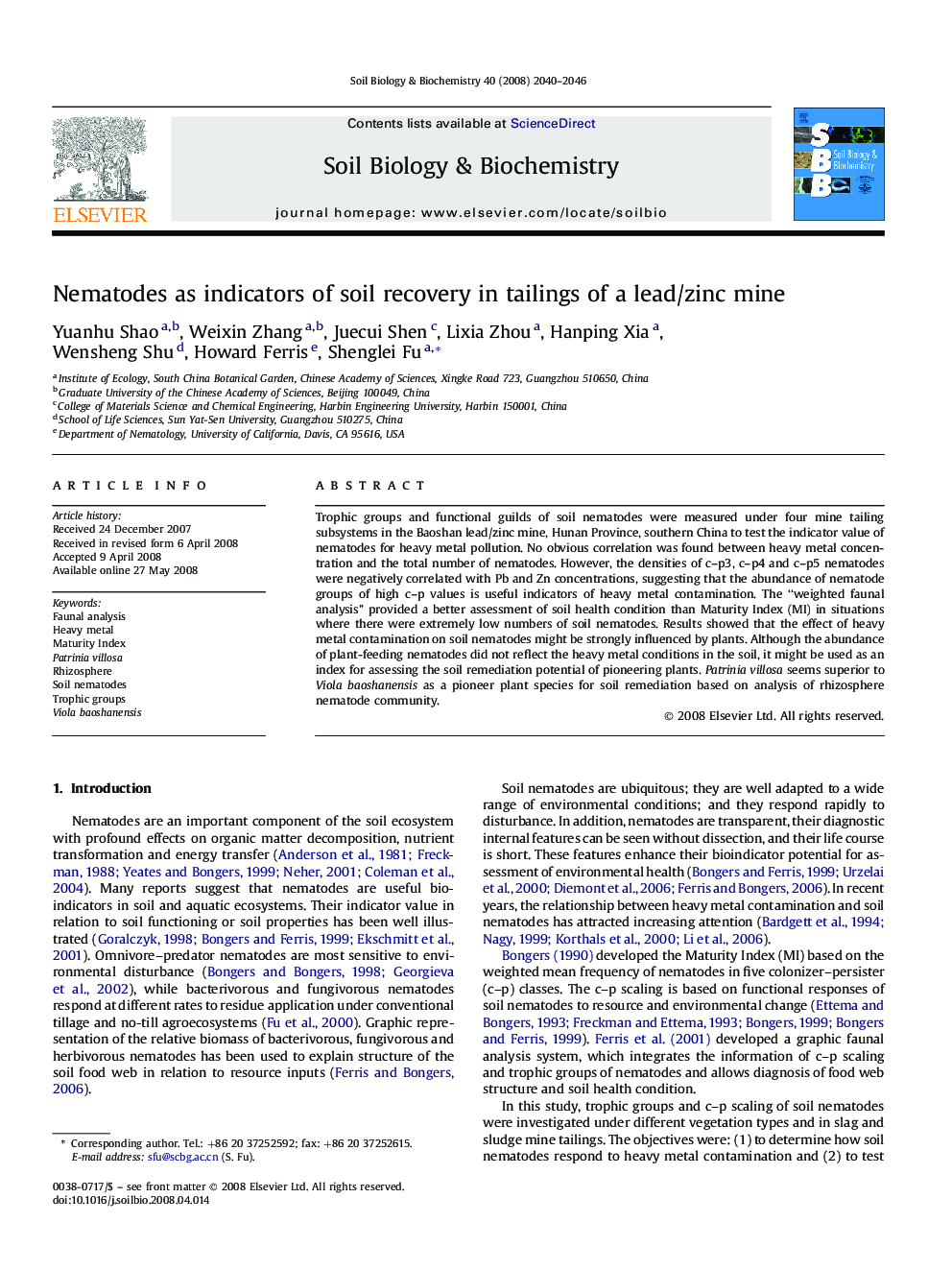| Article ID | Journal | Published Year | Pages | File Type |
|---|---|---|---|---|
| 2026925 | Soil Biology and Biochemistry | 2008 | 7 Pages |
Trophic groups and functional guilds of soil nematodes were measured under four mine tailing subsystems in the Baoshan lead/zinc mine, Hunan Province, southern China to test the indicator value of nematodes for heavy metal pollution. No obvious correlation was found between heavy metal concentration and the total number of nematodes. However, the densities of c–p3, c–p4 and c–p5 nematodes were negatively correlated with Pb and Zn concentrations, suggesting that the abundance of nematode groups of high c–p values is useful indicators of heavy metal contamination. The “weighted faunal analysis” provided a better assessment of soil health condition than Maturity Index (MI) in situations where there were extremely low numbers of soil nematodes. Results showed that the effect of heavy metal contamination on soil nematodes might be strongly influenced by plants. Although the abundance of plant-feeding nematodes did not reflect the heavy metal conditions in the soil, it might be used as an index for assessing the soil remediation potential of pioneering plants. Patrinia villosa seems superior to Viola baoshanensis as a pioneer plant species for soil remediation based on analysis of rhizosphere nematode community.
